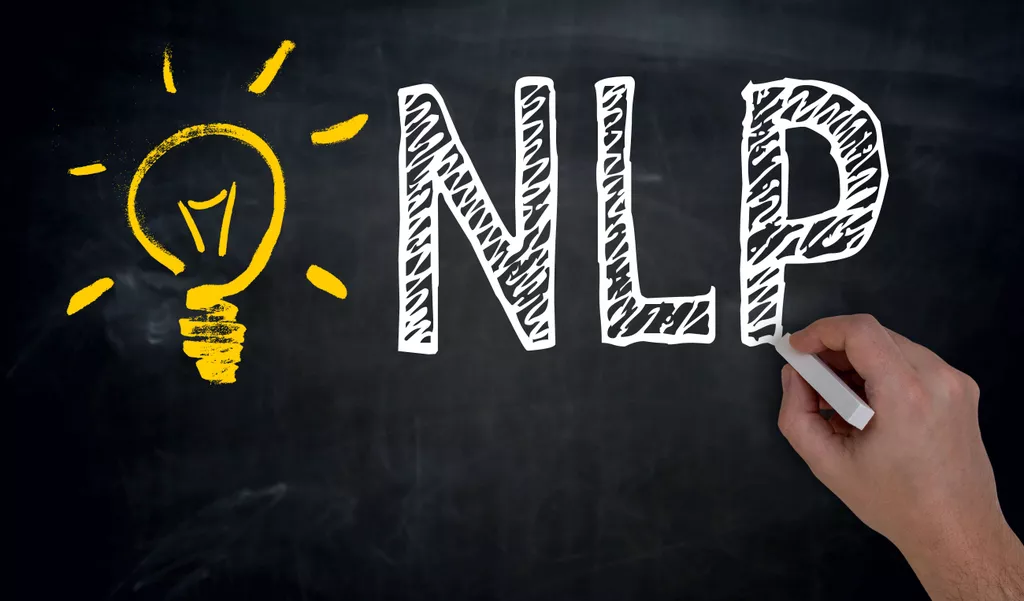IVR is a communication tool that automates interactions and increases first-time resolutions through touch-tone key selections and voice commands. IVR systems can use TTS to provide customers with information such as account balances and how much is due from their latest bill. Automatic speech recognition (ASR) is a technology that enables a software program to process human speech into a written format.
- The conversations are sometimes designed like a decision-tree workflow where users can select answers depending on their use case.
- With the Conversational Cloud, they can oversee conversational chatbots and even label misunderstood intents with AI Annotator.
- Although ChatGPT has made quite the buzz, its popularity has made it unreliable for everyday use since it’s often at capacity.
- Over time, as it processes more responses, the conversational AI learns which response performs the best and improves its accuracy.
- Of course, it might be more accurate to say that these are outdated facts rather than misconceptions.
- Approximately $12 billion in retail revenue will be driven by conversational AI in 2023.
Conversational AI is a technology that enables machines to understand, interpret, and respond to natural language in a way that mimics human conversation. When most people talk about chatbots, they’re referring to rules-based chatbots. Also known as toolkit chatbots, these tools rely on keyword matching and pre-determined scripts to answer the most basic FAQs.
What Is Conversational AI? More Than Just Chatbots
Although ChatGPT has made quite the buzz, its popularity has made it unreliable for everyday use since it’s often at capacity. The good thing is there are plenty of AI chatbots that are just as capable, and available whenever you need them. Chatbots are thriving, and the chatbot market is expected to grow from $2.99 billion in 2020 to $9.4 billion in 2024.

It has a unique scanning worksheet feature to generate curated answers, making it a useful tool to help children understand concepts they are learning in school. Chatsonic is a dependable AI chatbot, especially If you need an AI chatbot that is up-to-date on current events. Because Chatsonic is supported by Google, it is aware of current news and can provide you answers and stories that relate to it, which ChatGPT can’t do since its database doesn’t go past 2021. Conversational AI uses artificial intelligence (AI) to enable computers to conduct natural, similar-to-human dialogues with customers.
SOLUTIONS
Chatbots can’t improvise or handle complex inquiries humanly and can turn off prospects long before they enter the sales funnel. Some call centers also use digital assistant technology in a professional setting, taking the place of call center agents. These digital assistants can search for information and resolve customer queries quickly, allowing human employees to focus on more complex tasks. Most companies use chatbots for customer service, but you can also use them for other parts of your business. For example, you can use chatbots to request supplies for specific individuals or teams or implement them as shortcut systems to call up specific, relevant information.

This is so that it can grasp and interpret human language more precisely while responding in a suitable and relevant way. Because it can handle a variety of activities and give users more individualized help, it is highly suited for applications like virtual assistants. Advances in natural language processing (NLP), a branch of artificial intelligence that thrives in connecting computers and people through everyday language, have made conversational AI conceivable. These algorithms can be used to produce responses that are appropriate and contextually relevant. A chatbot is a computer program created to mimic communication with real visitors, particularly online.
Chatbots and conversational AI
If there is any dialogue confusion, the agent will ignore the user’s input that doesn’t answer the question. Both chatbots and conversational AI can be helpful for businesses, depending on the specific needs and goals of the organization. Chatbots and conversational AI are often used interchangeably, but they are different. Chatbots are computer schedules developed to imitate discussions with human users.
Are chatbots based on NLP?
These AI-powered chatbots use a branch of AI called natural language processing (NLP) to provide a better user experience. Often referred to as virtual agents or intelligent virtual assistants, these NLP chatbots help human agents by taking over repetitive and time consuming communications.
Basic chatbots are usually only capable of limited tasks and need the help of conversational AI to enhance their abilities further. Conversational AI can comprehend and react to both vocal and written commands. This technology has been used in customer service, enabling buyers to interact with a bot through messaging channels or voice assistants on the phone like they would when speaking with another human being. The success of this interaction relies on an extensive set of training data that allows deep learning algorithms to identify user intent more easily and understand natural language better than ever before.
How did I choose these AI chatbots?
So when it comes down to it, what’s the difference between conversational AI vs. chatbots? Before deciding what kind of chatbot to implement, it’s essential to carefully consider your use case and what your new addition will bring to your business. MindTitan is on hand to help you make the right decision as we have experience implementing various kinds of chatbots. While some companies try to build their own conversational AI technology in-house, the fastest and most efficient way to bring it to your business is by partnering with a company like Netomi. These technology companies have been perfecting their AI engines and algorithms, investing heavily in R+D and learning from real-world implementations.
Chatbots are frequently used in consumer assistance to respond to asked questions and help customers fix problems. They can also be used in other areas, such as entertainment, where they can be programmed to tell jokes or provide information on a particular topic. A chatbot is a computer program developed to imitate talks with real users, particularly over the net.
Why Conversational AI Is So Much More Than a Chatbot
On the other hand, chatbot developers write all the probable responses and feed them into the bot. Next, the user inputs are matched with the keywords in the response and the scripted answers are provided to them. Because human speech is highly unstandardized, natural language understanding is what helps a computer decipher what a customer’s intent is. It looks at the context of what a person has said – not simply performing keyword matching and looking up the dictionary meaning of a word – to accurately understand what a person needs. This is important because people can ask for the same thing in hundreds of different ways. In fact, Comcast found that there are 1,700 different ways to say “I’d like to pay my bill.” Leveraging NLU can help AI understand all of these different ways without being explicitly trained on each variance.
Is chatbot a conversational agent?
What is a conversational agent? A conversational agent, or chatbot, is a narrow artificial intelligence program that communicates with people using natural language.
Most chatbots cannot adapt to slang, misspellings, or sarcasm, leaving prospects feeling misunderstood. That means chatbots can miss opportunities to hook prospects when they are passively browsing or used to communicating in regionally or culturally specific ways. Rather than streamlining the process, this undermines the immediate service prospects are seeking and can cause users to feel like your company isn’t willing to meet them where they’re at. That said, the real secret to success with chatbots and Conversational AI is deploying them intelligently.
The Top Benefits of AI for Marketers [State of AI Data]
Although it was the first AI program to pass a full Turing test, it was still a rule-based, scripted program. Chatbots made their debut in 1966 when a computer scientist at MIT, Joseph Weizenbaum, created Eliza, a chatbot based on a limited, predetermined flow. Eliza could simulate a psychotherapist’s conversation through the use of a script, pattern matching and substitution methodology. You can train Conversational AI to provide different responses to customers at various stages of the order process. An AI bot can even respond to complicated orders where only some of the components are eligible for refunds.
- Additionally, they can be employed in various contexts, such as entertainment, where they can be programmed to deliver jokes or disseminate knowledge about a specific subject.
- Through the automation of these tasks, the technology drastically lowers the operational cost of the contact center and the time it takes to perform manual data entry.
- You can successfully create a conversational AI system that satisfies your demands and assists you in achieving your goals by adhering to these procedures.
- They are hailed as the universal interface between people and digital systems.
- In addition, unlike a human customer service representative, a chatbot is available 24/7 and can handle multiple interactions simultaneously.
- Corporations will see massive benefits in their CX delivery when they leverage a suite of NLP and machine learning engines.
But if someone writes “I just bought a new laptop, and it doesn’t work” they probably have the user intent of seeking customer support. For example, conversational AI understands if it’s dealing with customers who are excited about a product or angry customers who expect an apology. While they may seem to solve the same problem, i.e., creating a conversational experience without the presence of a human agent, there are several distinct differences between them. And that is the reason that we are familiar with these chatbots and the problems that come with them. Advancements in conversational AI technology mean that its applications are growing. Similar to how computer vision tech goes into everything from self-driving car navigation to facial recognition software, conversational AI helps create different programs.
What’s the difference between a Chatbot, a Voicebot and a Virtual Assistant?
Mosaicx delivers an advanced and intuitive level of consumer self-service within a single solution. We help our customers create conversational design strategies that will make digital communications more human-centered and improve metadialog.com the customer experience. Apparently, studies indicate that humans consider chatbots to be limited and more ‘primitive’. Therefore, when interacting with disclosed conversational AI chatbots, they use very simple language.
Regulators are tracking complaints about ‘deficient’ financial chatbots – Inman
Regulators are tracking complaints about ‘deficient’ financial chatbots.
Posted: Tue, 06 Jun 2023 21:24:28 GMT [source]
Once I gathered all of this data and tried them out for myself, I identified which AI chatbot would be best for the needs of different individuals and included them in the list. The blueprint for chatbots, encompassing a wide range of skills beyond writing, including coding, conversation, and math equations, and is available to the public at no cost. With YouChat, you can input a prompt for what you want to be written and it will write it for you, just like ChatGPT would for free. The chatbot outputs an answer to anything you input including math, coding, translating, and writing prompts. A huge pro for this chatbot is that, because it lacks popularity, you can hop on at any time and ask away. ZDNET’s recommendations are based on many hours of testing, research, and comparison shopping.
If we have made an error or published misleading information, we will correct or clarify the article. If you see inaccuracies in our content, please report the mistake via this form. Get started today, and choose the best learning path for you with Agility CMS. By following these steps, you can successfully implement a conversational AI system that meets your needs and helps you to achieve your goals.
These days businesses are using the word chatbots for describing all type of their automated customer interaction. They have a predetermined or a rule-based conversational flow where the user picks options, and then chatbots take the conversation further based on their inputs. Each answer to a question is automated in advance to lead to the next question.
- ”; in both cases, NLP will break down pricing in an approachable way that makes your prospect feel that it gives them a favorable opinion of your community.
- Their features are versatile, for example, reminders, to-do list management, search assistance, note-taking, etc.
- They can be programmed to serve other objectives, such as entertainment.
- In a recent PwC study, 52 percent of companies said they ramped up their adoption of automation and conversational interfaces because of COVID-19.
- These new virtual agents make connecting with clients cheaper and less resource intensive.
- According to a report by Accenture, as many as 77% of businesses believe after-sales and customer service are the most important areas that will be affected by artificial intelligence assistants.
Oftentimes, users will bring down the level of their vocabulary when interacting with a program due to their desire ‘to make the machine understand’. You can use NLP technologies in typically dumb chatbots to make them either understand users better, or generate responses to questions/intents. Sometimes, these chatbots will allow the user to type text into them, but they’re just looking for specific words or phrases to match against.
CFPB Warns Against ‘Poorly Deployed’ Banking Chatbots – PYMNTS.com
CFPB Warns Against ‘Poorly Deployed’ Banking Chatbots.
Posted: Tue, 06 Jun 2023 18:53:59 GMT [source]
What is a conversational AI?
Conversational AI is a type of artificial intelligence (AI) that can simulate human conversation. It is made possible by natural language processing (NLP), a field of AI that allows computers to understand and process human language.
